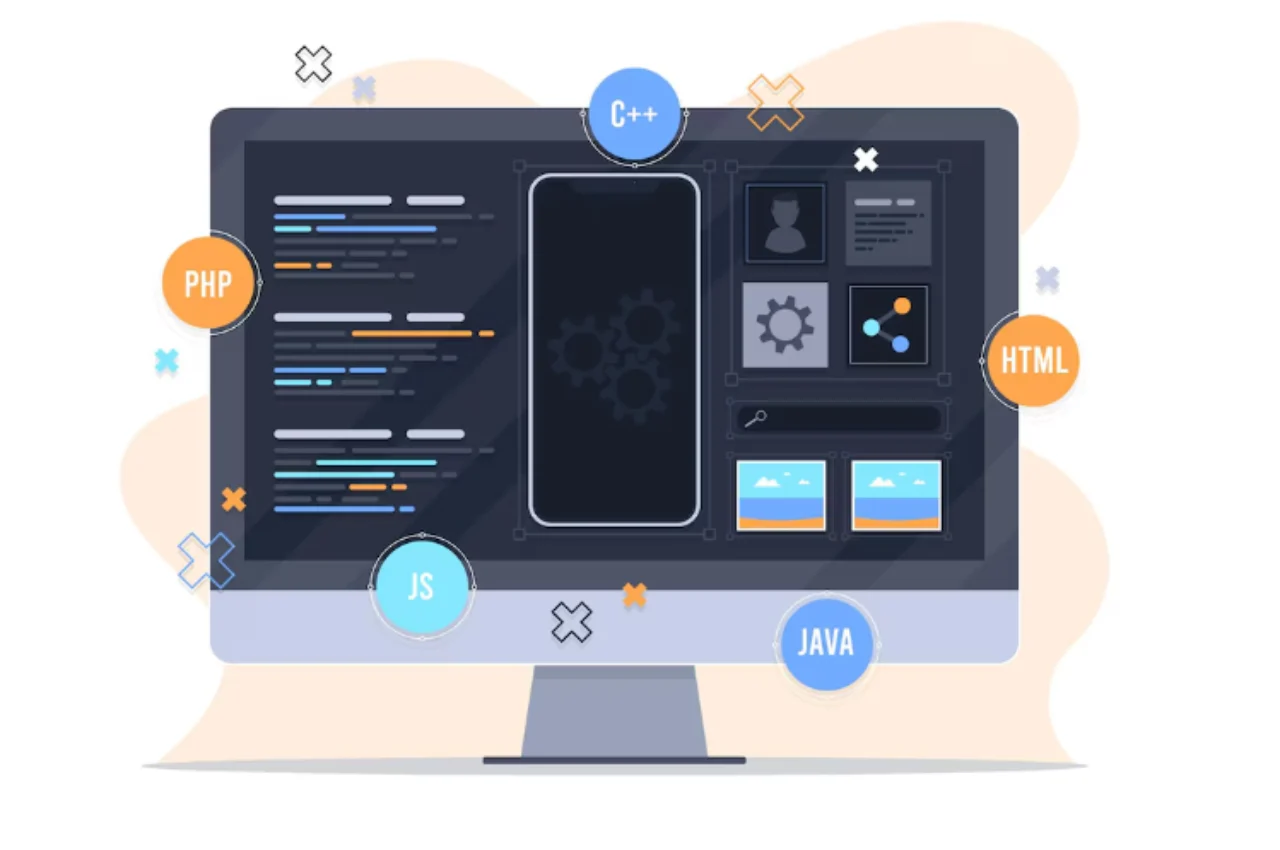Webflow and WordPress serve different purposes, with Webflow excelling in design flexibility and ease of use, while WordPress offers more robust customization and plugin options. Both platforms have their strengths and weaknesses, so the choice depends on the specific needs of the user.
Webflow is a modern website builder that enables users to create visually stunning websites without the need for coding knowledge. Its intuitive interface and powerful design tools make it a preferred choice for designers and creative professionals. On the other hand, WordPress is a versatile content management system that allows for extensive customization and functionality through its wide range of plugins and themes. Understanding the strengths and limitations of each platform is crucial in making an informed decision for your website needs.
Table of Contents
Ease of Use
Webflow offers an intuitive drag-and-drop interface, making it accessible for users without coding experience. Its visual editor allows real-time design changes, which streamlines the workflow. In contrast, WordPress requires some familiarity with its interface and may involve more steps, especially when dealing with plugins and themes. While WordPress provides more flexibility for advanced customization, Webflow’s ease of use makes it a strong contender for those prioritizing simplicity and efficiency in website building.

Webflow’s Ease of Use
- Webflow provides a drag-and-drop interface for easy website building.
- No coding knowledge is required to create professional-looking websites in Webflow.
- The visual editor in Webflow allows for real-time customization and previewing of changes.
WordPress’s Ease of Use
- WordPress offers a wide range of themes and plugins for customization.
- Familiar dashboard layout makes it easy for users to navigate and manage content.
- Basic coding knowledge may be needed for more advanced customization in WordPress.
Design Capabilities
In the realm of website development, design capabilities play a crucial role in determining the effectiveness and visual appeal of a site. Both Webflow and WordPress are powerful platforms, each with its own unique strengths when it comes to design capabilities.
Webflow’s Design Capabilities
Webflow is renowned for its advanced design capabilities, offering a visual and intuitive interface that allows users to create stunning, custom designs without the need for coding knowledge. The platform provides a comprehensive set of design tools, including a drag-and-drop interface, flexible layout options, and the ability to customize every aspect of a website’s design.
- Visual and intuitive interface
- Drag-and-drop functionality
- Flexible layout options
- Extensive customization capabilities
WordPress’s Design Capabilities
WordPress also offers robust design capabilities, with a wide range of themes and plugins that enable users to create visually appealing websites. While WordPress may require some coding knowledge for more advanced customizations, its vast library of themes and plugins provides users with a variety of design options to suit their needs.
- Wide range of themes and plugins
- Ability to customize designs with coding knowledge
- Varied design options to suit different needs
Flexibility and Customization
When it comes to building a website, flexibility and customization are crucial factors to consider. Both Webflow and WordPress offer different levels of flexibility and customization options, making it essential to understand the strengths and limitations of each platform.
Webflow’s Flexibility and Customization
Webflow is known for its powerful design and layout customization capabilities. The platform allows users to create highly custom designs without the need for coding knowledge. With Webflow’s visual editor, users can easily manipulate elements, styles, and animations, providing a high level of flexibility in creating unique and visually appealing websites.
Additionally, Webflow’s ability to integrate custom code gives users even more flexibility to extend the platform’s capabilities, making it a suitable choice for those who require advanced customization options.
WordPress’s Flexibility and Customization
WordPress, on the other hand, offers flexibility and customization through its extensive range of themes, plugins, and custom coding options. With thousands of themes and plugins available, users have the flexibility to create virtually any type of website, from simple blogs to complex e-commerce platforms.
WordPress’s open-source nature allows for deep customization through custom coding, giving users the freedom to tailor their websites to their exact specifications. This level of flexibility makes WordPress a popular choice for businesses and developers seeking extensive customization options.
Ecommerce Capabilities
When comparing Webflow to WordPress, one key factor is eCommerce capabilities. Webflow offers a streamlined approach to building online stores, with a focus on design flexibility and ease of use. It provides built-in eCommerce features, including product management, payment gateways, and customizable checkout experiences.

While Webflow’s eCommerce tools are user-friendly, WordPress, with WooCommerce, offers a more extensive range of plugins and integrations. This makes WordPress a more robust choice for larger, complex eCommerce sites, whereas Webflow excels for those seeking a visually driven, all-in-one solution with fewer moving parts.
Webflow’s Ecommerce Capabilities
Webflow offers an intuitive drag-and-drop interface for creating stunning online stores.
- Easy to set up product listings and manage inventory.
- Customizable checkout process for a seamless customer experience.
- Integrated payment gateways for secure transactions.
WordPress’s Ecommerce Capabilities
WordPress provides robust ecommerce functionality through plugins like WooCommerce.
- Extensive range of plugins for adding products, managing orders, and more.
- Flexible design options to create a unique online store.
- Support for various payment gateways to cater to diverse customer preferences.
SEO and Marketing
Comparing Webflow and WordPress for SEO and marketing, Webflow offers more design flexibility and better control over SEO elements. Its intuitive interface and built-in optimization tools make it a strong choice for digital marketing efforts. However, WordPress has a wider range of plugins and a larger community, offering more options for SEO and marketing strategies.
SEO and Marketing play a crucial role in building an effective online presence. With the advent of modern technologies, businesses need to choose the right platform to build their website that not only looks great but also ranks well in search engines. In this article, we will compare Webflow and WordPress in terms of their SEO and Marketing capabilities.
Webflow’s SEO and Marketing Capabilities
Webflow is an all-in-one web design platform that comes with built-in SEO tools and features. It allows users to optimize their website’s meta title, meta description, and image alt text for better search engine visibility. Webflow also offers various integrations with popular marketing tools such as Google Analytics, Facebook Pixel, and HubSpot. One of the significant advantages of using Webflow is its ability to generate clean and SEO-friendly codes, which search engines love. The platform also offers responsive designs, which means your website will look great on any device, further enhancing your user experience.
WordPress’s SEO and Marketing Capabilities
WordPress is a popular CMS platform that comes with a vast range of SEO plugins and tools. It offers users complete control over their website’s meta title, meta description, and image alt text. WordPress also has a wide range of plugins for SEO optimization, including Yoast SEO, All in One SEO Pack, and Rank Math.
WordPress also has a vast range of marketing plugins that allow users to integrate their website with popular marketing tools such as Google Analytics, Mailchimp, and HubSpot. Additionally, WordPress offers numerous customization options, allowing users to create unique and engaging content, which is essential for driving traffic to their website. Both Webflow and WordPress offer excellent SEO and Marketing capabilities. However, the choice between the two platforms largely depends on your business needs and preferences.
If you are looking for a platform that offers an all-in-one solution with built-in SEO tools and responsive design, Webflow might be the right choice for you. On the other hand, if you want complete control over your website’s SEO and marketing capabilities, WordPress is the way to go.
Pricing and Plans
In the world of website building platforms, both Webflow and WordPress are popular choices. When it comes to deciding between the two, pricing and plans play a significant role in the decision-making process. Let’s take a closer look at the pricing and plans offered by Webflow and WordPress to determine which platform offers the best value for your needs.

Webflow’s Pricing and Plans
Webflow offers a transparent and straightforward pricing structure that caters to a wide range of users, from individuals to large businesses. The platform provides a free plan that allows users to experiment and get a feel for the interface before committing to a paid plan. For those looking for more advanced features and capabilities, Webflow offers two main paid plans: Site Plans and Account Plans. Each plan comes with its own set of features and pricing tiers, allowing users to select the option that best suits their needs and budget.
WordPress’s Pricing and Plans
WordPress, on the other hand, is known for its flexibility and scalability, particularly with its open-source software. The platform itself is free to use, but users need to consider additional costs such as hosting, domain registration, and premium plugins or themes. While WordPress offers a cost-effective solution for those with technical know-how and a willingness to manage their own website, it may require more investment in terms of time and resources to achieve the desired results.
Conclusion
Ultimately, choosing between Webflow and WordPress depends on your specific needs and preferences. Both platforms offer unique features and benefits, so it’s important to consider what aligns best with your goals. Whether you prioritize design flexibility or user-friendliness, making an informed decision is key for your website’s success.


